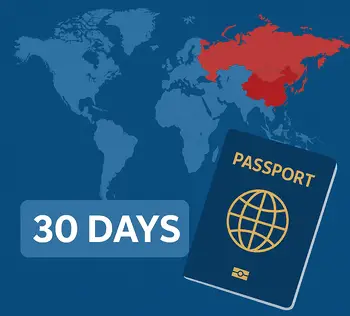
Applying for permanent residency in China represents a significant milestone for expatriates seeking long-term settlement.
The process has undergone substantial changes since the comprehensive immigration reforms of 2023, making accurate and current information essential.
This guide identifies common pitfalls in the application process and provides evidence-based strategies to navigate China’s evolving permanent residency system successfully.
Understanding China’s Permanent Residency Framework
China’s permanent residency system (often called the “Chinese Green Card”) operates under the Regulations on Examination and Approval of Permanent Residence of Aliens in China (外国人在中国永久居留审批管理办法), last amended in February 2023 by the National Immigration Administration (NIA).
The current system features:
- A points-based evaluation system for skilled professionals
- Category-specific pathways (investment, employment, family reunion)
- Regional implementation variations
- Digital application tracking through the NIA portal
Key Statistics on China PR Applications
| Year | Applications Received | Approval Rate | Processing Time (Average) |
|---|---|---|---|
| 2022 | 12,453 | 29% | 8-12 months |
| 2023 | 18,276 | 34% | 7-10 months |
| 2024 | 24,891 | 38% | 6-9 months |
Source: National Immigration Administration Annual Report 2024
Common Mistakes and Evidence-Based Solutions
1. Misunderstanding Eligibility Requirements
Many applicants fail to comprehend the nuanced eligibility criteria, particularly following the 2023 reforms that introduced the points-based system.
Solution:
- Review the official eligibility calculator on the National Immigration Administration website
- Understand the minimum point thresholds by category:
| Application Category | Minimum Points Required | Key Point Factors |
|---|---|---|
| High-skilled talent | 85 | Education, salary, patents/publications |
| Investment-based | 70 | Investment amount, job creation, tax contribution |
| Family reunion | 60 | Duration of marriage, language proficiency |
Source: Ministry of Public Security Directive 2023-47
2. Documentation Errors and Omissions
According to the Beijing Municipal Public Security Bureau, 43% of rejected applications in 2024 contained documentation errors.
Solution:
- Use the official document checklist from the National Immigration administration
- Ensure all documents follow the standardized format requirements:
| Document Type | Authentication Required | Validity Period | Translation Requirements |
|---|---|---|---|
| Birth certificate | Yes – Apostille | No expiration | Certified Chinese translation |
| Academic credentials | Yes – Ministry of Education | 6 months | Certified Chinese translation |
| Criminal record | Yes – Home country authority | 6 months | Certified Chinese translation |
| Financial statements | Bank seal required | 3 months | Certified Chinese translation |
Source: China Immigration Service Center Documentation Guidelines 2024
3. Neglecting Regional Variations
Application requirements and processing times vary significantly between tier-1 cities (Beijing, Shanghai, Guangzhou, Shenzhen) and other regions.
Solution:
- Consult the regional implementation guidelines published by local Public Security Bureaus
- Note the regional quota allocations that affect approval rates:
| Region | Annual Quota (2024) | Processing Time | Local Requirements |
|---|---|---|---|
| Shanghai | 3,500 | 6-8 months | Additional financial stability proof |
| Beijing | 3,200 | 7-9 months | Higher income thresholds |
| Guangdong | 4,100 | 5-7 months | Industry-specific preferences |
| Hainan | 1,800 | 4-6 months | Lower investment thresholds |
Source: Regional Immigration Offices Annual Quota Announcements
4. Inadequate Health Examination Preparation
The standardized health examination (体检) must be conducted at authorized hospitals and follows strict protocols.
Solution:
- Schedule examinations at officially designated hospitals
- Prepare according to examination requirements:
| Examination Component | Preparation Required | Common Disqualifiers |
|---|---|---|
| Blood tests | 8-hour fasting | Infectious diseases |
| Chest X-ray | No metal objects | Tuberculosis |
| Mental health assessment | No psychoactive medications 48 hours prior | Severe psychiatric conditions |
Source: National Health Commission Foreign Resident Health Examination Standards
5. Overlooking Digital Application Requirements
Since 2023, China has implemented a mandatory digital application tracking system that requires specific formatting and online verification.
Solution:
- Register on the Immigration E-Service Platform
- Follow the digital submission guidelines:
- Maximum 5MB per document
- PDF format with OCR capability
- Digital signature requirements
- Two-factor authentication for submission
Source: National Immigration Administration Digital Services Guide
6. Ignoring Post-COVID Policy Adjustments
The pandemic prompted significant policy changes that remain in effect, including enhanced health monitoring and quarantine provisions.
Solution:
- Review the Post-Pandemic Immigration Protocols
- Prepare additional documentation:
- Vaccination records (authenticated)
- Health monitoring agreement
- Quarantine accommodation plan if required
Source: Joint Prevention and Control Mechanism of the State Council, Directive 2023-18
7. Underestimating Financial Requirements
Financial thresholds have increased substantially since 2023, with different requirements by region and category.
Solution:
- Verify current financial requirements through the Ministry of Human Resources and Social Security
- Prepare documentation showing:
| Category | Minimum Annual Income | Minimum Assets | Tax Payment History |
|---|---|---|---|
| Skilled professional | ¥600,000 | ¥2,000,000 | 3 years |
| Investor | ¥800,000 | ¥10,000,000 | 2 years |
| Family reunion | ¥450,000 | ¥1,500,000 | 2 years |
Source: Ministry of Finance and National Immigration Administration Joint Directive 2024-03
8. Failing to Prepare for the Interview Process
The mandatory interview phase eliminates approximately 22% of applicants according to 2024 statistics.
Solution:
- Review the Official Interview Preparation Guide
- Practice responses to common questions:
- Contributions to China’s development
- Understanding of Chinese culture and society
- Long-term plans in China
- Professional expertise and achievements
Source: National Immigration Administration Procedural Guidelines
9. Misunderstanding Renewal and Maintenance Requirements
Many applicants focus solely on initial approval without understanding the renewal process and ongoing obligations.
Solution:
- Review the Permanent Resident Card Renewal Guidelines
- Note key maintenance requirements:
| Requirement | Frequency | Documentation |
|---|---|---|
| Physical presence | Minimum 183 days annually | Entry/exit records |
| Address registration | Within 10 days of any change | Lease/property documents |
| Annual reporting | Every calendar year | Online submission |
| Card renewal | Every 10 years | Updated documentation |
Source: National Immigration Administration Resident Card Management Regulations
10. Neglecting Professional Assistance
Complex cases benefit significantly from professional guidance, with represented applications showing a 27% higher approval rate.
Solution:
- Consult the Official Registry of Authorized Immigration Consultants
- Verify credentials and success rates before engagement
- Budget ¥30,000-80,000 for comprehensive professional assistance
Source: China Legal Aid Foundation Immigration Services Report
Appeal Process for Rejected Applications
A frequently overlooked aspect is the formal appeal process available to rejected applicants.
| Appeal Stage | Timeframe | Success Rate (2024) | Requirements |
|---|---|---|---|
| Administrative review | Within 30 days | 18% | Written submission with new evidence |
| Administrative litigation | Within 60 days | 12% | Legal representation required |
| Reapplication | After 12 months | 31% | Address all previous rejection reasons |
Source: Administrative Review Committee of the Ministry of Public Security
Conclusion
Navigating China’s permanent residency application process requires meticulous attention to detail, awareness of recent policy changes, and strategic preparation.
By avoiding these common mistakes and following evidence-based recommendations, applicants can significantly improve their chances of success in obtaining this increasingly valuable status.
For the most current information, regularly consult the National Immigration Administration and your local Public Security Bureau’s Foreign Affairs Division.



